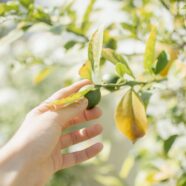A Zesty Hobby: Growing Your Own Lime Trees
The Allure of Lime Trees
Lime trees are not only attractive and fragrant, but they also produce a tangy and versatile fruit that can enhance any dish or beverage. For young adults seeking a new and rewarding hobby, growing your own lime trees can prove to be an exciting and fruitful endeavor. Here’s what you need to know about nurturing these citrus wonders in your own backyard.
Choosing the Right Lime Tree
There are several types of lime trees you can grow, each with its own unique characteristics:
- Key Lime (Citrus aurantifolia): Produces small, aromatic fruits with a strong and acidic flavor, perfect for pies and cocktails.
- Persian Lime (Citrus latifolia): Bears larger, seedless fruits with a milder, sweeter taste, ideal for various culinary uses.
- Kaffir Lime (Citrus hystrix): Known for its distinctively wrinkled fruits and aromatic leaves, widely used in Southeast Asian cuisine.
Consider your climate and available space when selecting your lime tree variety. Lime trees thrive in warm, sunny locations and may require protection from frost in colder regions.
Planting and Caring for Your Lime Tree
Once you’ve chosen your lime tree variety, follow these steps to ensure a healthy and bountiful harvest:
- Select a suitable location: Lime trees need at least 6-8 hours of direct sunlight daily. Choose a well-draining spot with enough room for the tree to grow (8-10 feet apart for multiple trees).
- Plant your tree: Dig a hole slightly larger than the root ball, place the tree in the hole, and backfill with soil, ensuring that the trunk remains above ground level. Gently tamp down the soil and water thoroughly.
- Water and fertilize: Lime trees require consistent moisture, so water them regularly, especially during dry spells. Fertilize with a balanced citrus fertilizer every 6-8 weeks during the growing season, following the package instructions.
- Prune and shape: Regular pruning helps maintain the tree’s shape and encourages fruit production. Remove dead or damaged branches, and trim any branches that cross or rub against each other.
- Protect from cold: Lime trees are sensitive to frost, so if you live in a colder climate, consider planting your tree in a large container that can be moved indoors during winter.
Harvesting and Enjoying Your Limes
Lime trees can start producing fruit within 1-3 years after planting. The fruit is typically ready to harvest when it’s firm, glossy, and has reached its full color (either yellow or green, depending on the variety). To harvest, simply twist the fruit gently until it detaches from the stem.
Once you’ve harvested your limes, the possibilities are endless! Use them to add a zesty kick to your favorite recipes, create refreshing beverages, or even make homemade cleaning solutions. The satisfaction of enjoying the fruits of your labor is truly unmatched.
Growing your own lime trees can become an enjoyable and gratifying hobby, providing you with an endless supply of fresh, homegrown citrus. With some care and patience, you’ll be well on your way to reaping the zesty rewards of these delightful trees.






